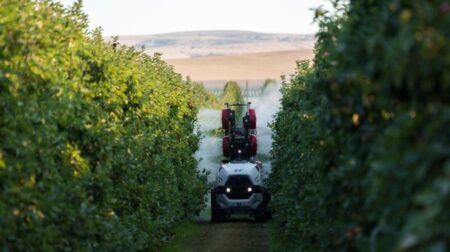Ford has introduced a team of collaborative robots (cobots) to assist engineers working on the company’s Fiesta model at its production facility in Cologne, Germany.
The six UR10 cobots from Universal Robots complete a choreographed sequence to sand the entire body surface in 35 seconds.
Each UR10 features a 3D-printed soft flexible layer between the robotic arm and the sandpaper, which enables the cobot to work with a similar level of precision and dexterity as a human hand.
“The cobots can feel when more force needs to be applied, just like we can, and they can more easily get to hard-to-reach places, like the centre of the roof,” said Dennis Kuhn, senior manufacturing engineer, paint shop, Ford of Europe.
During the production process, each Fiesta is submerged in a special bath to provide more than 10 years of corrosion protection. Afterwards, small flecks can remain on the surface, unseen to the naked eye, but which can be felt by hand and could impact the final finish of the vehicle.
The six cobots smooth away these inconsistencies and vacuum any dust left behind. Final checks are completed by two employees before the vehicle body moves along the line for the primer application.
According to Detlev Dahl, CEO of Dahl Automation, a Universal Robots-certified system integrator, the introduction of cobot technology on a moving production line for a multi-contoured vehicle required a new approach.
“It took several weeks to install the cobots and programme them to move in harmony to smooth the unique contours of a Ford Fiesta, a task made all the more difficult because the vehicle never stops moving,” said Dahl.
Ford is reviewing further rollout of the cobots at the company’s facilities in Valencia, Spain, and Craiova, Romania.
The company has already introduced other cobots that have been programmed to assist production line workers with complex assembly procedures, such as fitting shock absorbers to cars and spark plugs to engines; and also introduced a self-driving robot called Survival.







